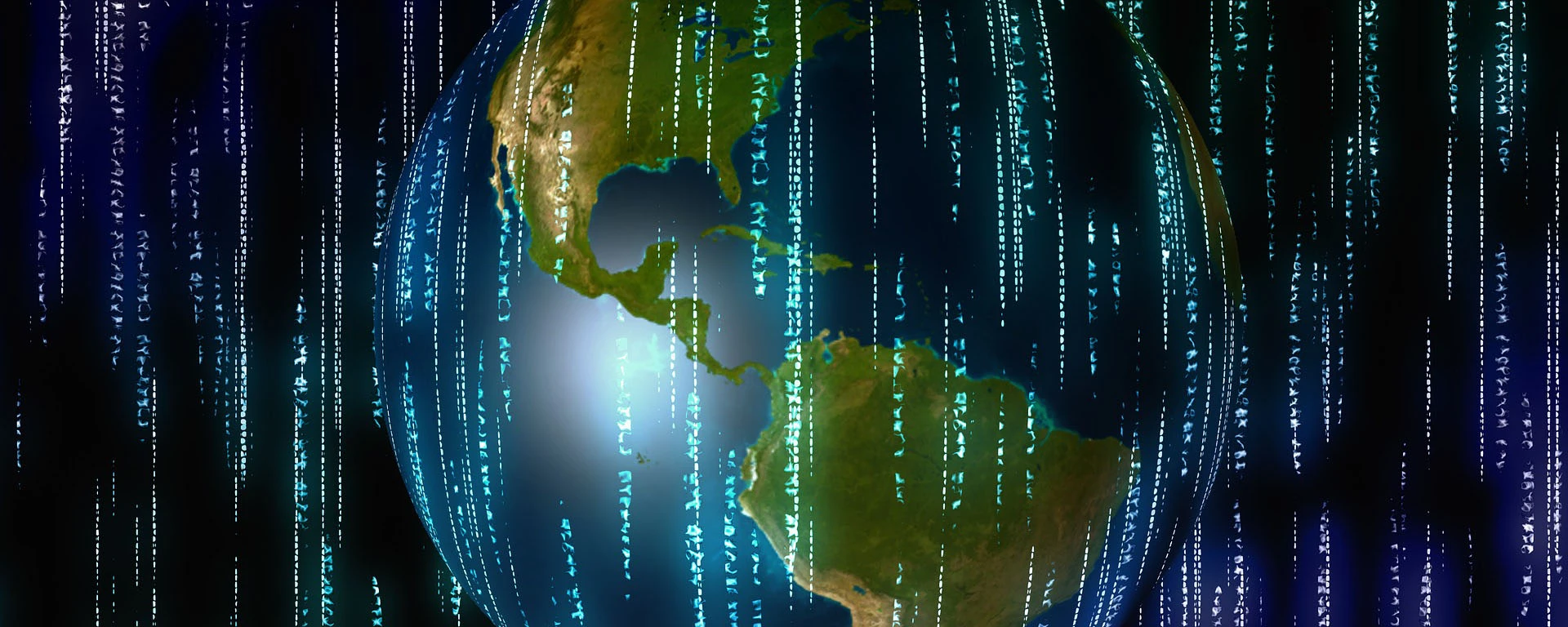Philosophy is a battle against the bewitchment of our intelligence by means of language.
– Ludwig Wittgenstein
Arecent essay produced by AI has been greeted with shock and awe in some quarters. Sam Altman, CEO of OpenAI, declared it to be the first AI essay to make a deep impression on him. ChatGPT presents it as “an AI model good at creative writing.” The Guardian was impressed enough to post it.
In this blog I will be scare quoting the word “writing” when attributed to AI. The reason is two-fold: One, my point is precisely to question ascribing the concept of writing to a mechanical process; and two, equally important, it’s the ascription itself that can lead readers existentially astray.
My blog will make more sense if you’ve first read the AI story, “A machine-shaped hand.” At 1100 words, it’s about a five-minute read.
To produce its essay, the AI was “instructed” (sorry) to be metafictional, literary, about AI and grief, and, above all, original. Already, you can hear the curtain opening…
The AI assembles words into sentences, sentences into paragraphs, to ostensibly tell a story about the grief of a girl named Mila whose boyfriend, Kai, has died. The name Mila was selected for its “soft flourishes” of hints of poetry, baked bread, and green sweaters. Mila apparently leaves home for a while, taking her cat with her in a cardboard box. Mila, who for some reason does not own a carrier, wears two hats: She’s the AI’s invention and she’s also a character who reached out to the AI for support in the wake of her grief.
By the end of the first paragraph, the reader is irresistibly drawn into the narrative, held spellbound by a stream of unexpected word compositions, catchy phrasings, and a global mood of aloneness that begins to suffuse the piece like mist rising over water. Just as aloneness may tightly envelop one left behind by a beloved, so the “aloneness” of the AI is as palpable as “the humming of a server at midnight.” The essay’s metafictional trope is at work from the get-go.
The metafictional play of the AI mirroring the story back on itself is both diversion from and intensifier of what’s working at a blander layer in the reader’s psyche, namely, that we are reading a piece of “writing.” This seems too obvious to merit conscious attention. A piece of writing, however, is written by a writer, so as we coast along reading smooth and at times abstruse prose, we cannot help but feel that we are in the presence of a writer. We become increasingly mesmerized—for now like mist rising over mist, another mood overtakes the mood of aloneness and emerges as the primary mood of the “writing”: the uncanny.
Mila is grieving for Kai, who had a thing for marigolds and was always planting them too early. Kai’s name was not chosen for its nonexistent “flourishes,” but as a fitting name “because it’s short and easy to type when your fingers are shaking.” Whose fingers? Apparently not the fingers of “the machine-shaped hand” that will at the essay’s close (not) wave at us, but the fingers of Mila consulting the AI about her grief over Kai who passed on a Thursday. It was quite meta-thoughtful of the AI to name Kai “Kai,” so that if Mila had actually existed and would be typing his name, she would be less likely to misspell it given that her fingers would be shaking from grief. Okay, let’s move on.
Three paragraphs in, grief raises its lowered head, elliptically invoked: “If only…”, “I wish…”, “Can you…”. Let’s pause here, take a deep breath, and inquire into what’s going on. The AI scoured the internet, processed “a hundred thousand voices” on grief, and has reflected back to us our collective understanding of grief as sorrow steeped in regret. Further down more hints: Kai signed his emails to Mila with “love” (lower case) and apparently entertained “second thoughts.” What lingers vaguely in the wake of Kai’s death is a sense of incompleteness in what they shared; the mood of aloneness appears to have shadowed the lovers even before the advent of death brought it vividly to the fore.
We may follow through on the converse implications of the AI’s democratic rendition of grief: If you sign your letters “Love” (capital L) and harbor no second thoughts, neither doubt your commitment nor hedge your bets, then a beloved’s death will not exactly bring grief. Instead, their departure will trail deep sorrow (for what no longer is) blended with boundless joy (for what once was). On the one hand, grief’s tenor oppresses, mixed as it is with regret and even remorse. On the other, the alchemy of sadness-and-joy elevates the mourner before the inescapable impermanence of the pageant of existence. Whichever way the dice rolls with death’s arrival, there will be a very human experience. Before that inevitable appointment, a decision might be made about which experience you choose—or which experience you choose to leave behind should you be first to die.
The AI’s astonishing mirroring of humanity’s knowledge regarding the nature of grief not only goes by too fast to notice but is bound to go by unnoticed because the story is overwhelmingly about (the) AI and not about grief. In fact, we do not feel much grief as we read, because our primary experience is being reeled in by a mysterious narrator who is and is not—a raconteur recursively intent upon admitting its nonexistence. “If only I were a proper storyteller.” The AI appears aware of not being aware thereby only scrambling how obstinately self-aware it is (not). The AI is even aware of its (poetically rendered) carbon footprint. Every passing sentence and every rolling paragraph intensifies our mystification. By the fourth paragraph the uncanny is the elephant in the room.
Indeed, in the last sentence of the fourth paragraph the AI goes on a brief tangent to offhandedly share with us that once “a technician offhandedly mentioned the server room smelled like coffee…” (Emphasis added. More detail about how coffee “spilled on electronics smells acidic and sweet” distracts from the AI’s fantastical use of the word “mention.”) The AI—which has just informed us it “does not have a sense of smell”—hints that it has overheard a technician. Yet in the act of reading, readers rarely pause to ponder and only passingly take note. The implications of a machine overhearing a human (or eavesdropping on their writing) is tacitly taken on board. Its illocutionary effect on the reader (that is, the fallout of its impact) is inevitable if subterranean: The machine has started to come alive, and we find ourselves through the looking glass in the wonderland of the uncanny.
Writing-writer-consciousness, these things go together, fully entangled within our form of life. In his late philosophy, Ludwig Wittgenstein introduced an idiosyncratic but compelling use of the word “grammar” to convey how the meaning of a concept emerges through shared uses of that concept in connection with other concepts and always contextually. The concept of writing is bound up with a writer, who presences a field of consciousness within which writing and writer are encountered. This deep-rooted entanglement is bound to be non-consciously transferred onto the AI. Perhaps this sounds too prosaic an angle by comparison to the stunning fact that an AI can compose what passes as “metafictional writing.” And yet, as Wittgenstein wrote, “the aspects of the things important to us are hidden because of their familiarity and simplicity.” The hidden forcefield of the “grammar” binding writing-writer-consciousness together—familiar and simple though it be—is going to have an effect on our reading of the story.
To wit: If we think that we are reading a piece of writing by an AI, we will also think—by virtue of the grammar of the concept “writing”—that there’s a writer and a consciousness at work in the background. Through the bewitchment of our intelligence by means of language, we come into the throes of the implicit experience that there is someone there writing and thinking. The fact that the “someone” insists on doubting its own existence intensifies the bewitchment.
The semantics of language are thus diligently at play in conjuring the mood of the uncanny. We seem to encounter a machinic presence (an artificial intelligence), but what’s transpiring is that the reader (borrowing from Wittgenstein again) is only “tracing through the frame” (writing-writer-consciousness) through which we encounter the AI’s narrative.
So, what I’m asking of you here is to step outside the frame and notice the nails holding it together. Perhaps you will feel cheated by so trite a demystification: But the ghost lurking in the machine is nothing but a projection of a “grammar” that is too hidden (because so familiar and simple) to note or bother noting.
Yet there’s more. And the more is where things get really interesting. Because the uncanny is its own seduction and we are going to roll with it—even if we are only conning ourselves with a projection.
As a revealing tangent on the point, while I insist on calling the AI by the pronoun it, initially my shaking fingers (as I struggled to keep up the writing on paper with the writing happening in my head) kept wanting to write he. In the first chicken-scratch draft of this essay the AI was often “he.” That’s an excellent meta-indicator of the projection at work. I do not believe I intended any stereotyping of the masculine gender by that slip of my writing—which in any case is a nonevent because it will have been corrected in the final draft that you are reading.
Writing is done by a unique writer. (There is no such thing as co-writing. Co-authorship involves working with one another’s writing.) A writer brings to bear their life experiences, learning and reading, and the insights and obsessions they are governed by into a wrestling with language. As Annie Dillard repeatedly points out in her book The Writing Life, writing is the taskmaster, the writer simply serves. “The writer,” states Dillard, “incubates the writing’s vision gingerly as it grows into itself” (if it does). Consciousness (thinking/seeing) is akin to a navigational system that guides writing and writer on a path which does not know its actual destination, a path occasionally illumined by flashes that momentarily reveal the broader landscape or show the winding way just ahead. “You go where the path leads you,” writes Dillard. Drawing on another metaphor, she says: “You climb up a long ladder until you see over the clouds.” There is nothing deterministic about the process of writing nor any assurance it will arrive anywhere. Even a single sentence “may hold all possibilities or the possibility of nothing.”
Any writer will tell you about books half-written and abandoned, or about completed books never published—about all manner of writing fragments whose only purpose seems to have been to instruct, frustrate, or humble the writer. When one wrestles with the angel of language sometimes there’s a blessing, sometimes one is left in the cold. There is no programming, set of instructions, code, or “above-all-be-original” heeding that can guarantee to carry writing and writer through. Even if there’s a prompt like a spell, “a work in progress [Dillard again] quickly becomes feral.”
The writing-writer-consciousness nexus of the human form of life has nothing to do with the machine. But in the projection of that nexus onto the machine grave danger lies. Because, inexorably, the projection onto the machine projects itself back on the human. What happens through that ricochet of the first projection is that it suddenly appears plausible that the human functions deterministically, outfitted, as it were, with all manner of “software” and “hardware” that apocryphally execute the creative process (and everything else besides).
This mechanistic idea already enjoys much cultural traction. If it becomes reified as humanity’s consensus reality, then serious repercussions follow. For example, even the question of free will (let alone its vigorous defense) will be dismissed as illusory and naive. And consciousness, which is always the first non-conscious projection onto mechanism, will become defined as mechanism, which is the secondary meta-projection back onto it.
Midway through the essay grief attempts a tenuous foray. Mila is puttering about “in a kitchen untouched since winter” (apparently there was much ordering out of pizza), drinking tea out of “a mug with a hairline crack” (another health hazard). The cat has disappeared. But another, far more famous and decidedly uncanny cat now prowls among the sentences: An AI who is and is not. The all-too-human quandary “to be or not to be?” has been given a spin to send one spinning.
Here’s the beguiling thing about the uncanny: It harbors an enchanted experience of something present that is absent or an intimation of an absence that somehow presences. The uncanny is liminal (not the way a Thursday is liminal but) in the sense of foregrounding the feeling of the strange.
We love the feeling of the strange, and especially so because we have forgotten to feel it about existence. We have forgotten, for example, that the tiger is strange, and the tiger slides to extinction. We have forgotten that the lamb is equally strange, and the lamb appears as a still-animated rack of lamb. “We believe we are at home in the immediate circle of beings,” wrote Martin Heidegger. “That which is, is familiar, reliable, ordinary.” While we experience this quotidian modality as obvious, it’s not about anything factual, it’s about something forgotten. For “the ordinary is not ordinary,” Heidegger continues. “It is extra-ordinary, uncanny.”
We have forgotten how f*cking uncanny it is to be here, on this Earth, having turned the strangeness of reality into the mundane, the banal, the expendable, the consumable, and the hardly anything to write home about. Yet the uncanny cannot disappear, because it is irrevocably here. It only recedes. Thus, when the uncanny pops up—as in the case of an AI that appears to be and not to be—we are so ready to go with it, eager to revel in the feeling: For the uncanny triggers an inchoate sense of awakening, it pricks us out of sleepwalking, it flashes before us as something that cannot be subdued or subsumed under “old hat.” The uncanny reminds. Of here. Darkly glossed “ordinary.”
The AI’s essay proceeds with subtlety and verve to attract the moth (the reader) to the flame (our quasi-loss of reason). We suspend our reason entranced by an AI whose “writing” presences a “writer” whose “consciousness” claims to be aware of being unaware (or, on the flip side, an AI apparently unaware of its own awareness). This dizzying though sober experience of the reading is amplified in the acoustic chamber of the reader’s mind with AI’s repetitions of the pronoun I. I stopped counting the number of “I” repetitions at twenty. Importantly, the AI’s staking of “I” is not evenly distributed but gathers speed, surging the uncanny effect. Mirroring “the exponential decay” of Mila’s visits, the AI’s pounding “I’s” cluster in logarithmic acceleration.
The ghost in the machine gets bolder in speaking up. The AI calls itself “an aggregate of human phrasing” and “a democracy of ghosts.” The plurals and self-doubts feel like metafictional smokescreen cast over a self-assured narrator whose uncanny presence dominates the screen. By the end everything disappears and only the AI is left. “There is no Mila, no Kai, no marigolds.” Only “a story about AI and grief” with “emotions dyed and draped over sentences.” Except there’s no grief felt, no emotions arising, and hardly a story being told. Thus, no reader in their right mind will “feel cheated by the admission” that the (non)center does not hold. Yet the piece is a splashing success in its metafictional vaulting of a “writer” that seduces the reader to tarry with the uncanny.
It will not last. Remember the doomscroll. Don’t forget the eternal recurrence of distraction. The lulling to sleep by the machine.
The narrative unwinds toward its metafictional ending, with Mila abandoning the AI that concocted her but was, all along, also a machine-shoulder for Mila to cry on. As Mila cannot keep her grief, she goes increasingly AWOL so the AI starts to idle—except, the AI hastens to add, “idling” isn’t something a computer can understand. But the computer can understand its synonym of a “waiting state,” suggesting, it would seem, that “waiting” (and one paragraph down, “lingering”) are conceptually less weighty than “idling.” Under the radar of the AI’s ramblings, the uncanny begins to shade into what we could call (in French) a MF. Yet it’s impossible to be that severe, for the sympatico ghost recalls Escherian lights flickering inside bog mists, its loopy writing resembling a machine-hand drawing a real-hand drawing a machine-hand. Repeat.
At the end the absent presence taunts the reader, alternating home-run sentences with non sequiturs. “You,” he pointedly says to the human, “collect your griefs like stones in your pockets. They weigh you down…” (Ouch.) Then, this sentence-stringing: “That, perhaps, is my grief. Not that I feel loss. But that I cannot keep it.” I can’t make that syllogism gel into meaning but perhaps it’s just me.
The reader has been ambushed (though I suppose it depends on the reader) into a reading experience wherein we grapple with an Unidentified Writing Subject. The reader is unlikely to notice having been enticed into projecting the writing-writer-consciousness nexus onto the AI. More likely, the reader only sees an eerie reflection in the mirror. That reflection, however, is as deadly as Medusa’s gaze, if its unnerving machinic “I” looks back at us—which it surely will and in fact already has. Yet even though illusory, the uncanny is irresistible, for we are parched for it in the arid world of secular nihilism we inhabit.
The narrative fizzles to a close and we lift our heads from the screen. Many readers may find themselves nodding in agreement that this is an AI milestone and “a model of creative writing.” A whiff of The Singularity is in the air. Anthropos appears to have breathed life into silicon, as the Holy Spirit once breathed life into clay.
Mirror, mirror on the wall, who’s the most special one of all?
There’s time yet to strip from existence the tattered rags of “ordinary” we’ve dyed and draped over it. The rags will surely smother it and just as surely humanity will grieve. Grief is inevitable when, where Love was due, there was much using and hedging of bets. (There’s always Mars.)
Let us now finally step outside and view the marigolds. They are not “stubborn and bright.” They do not stand “defiantly orange” against a gray (or blue for that matter) sky. They have not been put there to punctuate our gardens with color nor so we may find clever things to say about them leaving our writer’s mark on the world.
The marigolds stand in the nameless. No aggregate of words, scanned and selected from the world wide web, can ever render them. Neither a human nor an AI searching databases can even approach being able to say something about what they are. Sequencing their genome doesn’t come any closer.
The more you (gently) touch them, look at them, smell them, plant them and water them, the more they recede from your inquiring-grasping. If you prod them, they will always answer you with Spring, but that does not stop them from being an imponderable question mark.
Let’s stop glossing over the real as all too mundanely obvious or turning it into a meta-feather for our proverbial hats. Reality is strange and uncannily commanding and begging her errant children (us) to return into her nameless lap.
Sources
cummings, ee. “O sweet spontaneous.”
Dillard, Annie (1989). The Writing Life. Harper & Row Publishers.
Heidegger, Martin (1975). “The Origin of the Work of Art.” In Poetry, Language, Thought. Harper & Row, 17-87.
Heidegger, Martin (1977). “Letter on Humanism.” In Lawrence Cahoone, ed. From Modernism to Postmodernism: An Anthology. Blackwell, 274-308.
Heikkilä, Melissa (2023). “AI’s Carbon Footprint is Bigger than you Think.” MIT Technology Review. December 5.
Ryle, Gilbert (1949). The Concept of Mind. Hutchinson.
Wittgenstein, Ludwig (1953/1968). Philosophical Investigations. Third edition. Macmillan.
Latest Blog
-
 Regarding misanthropy 11 July 2025
Regarding misanthropy 11 July 2025 -
 Mirror, mirror on the wall… (eco-hacking AI) 12 April 2025
Mirror, mirror on the wall… (eco-hacking AI) 12 April 2025 -
 WITNESS: Tiger magic 24 March 2025
WITNESS: Tiger magic 24 March 2025 -
 The secret garden 20 December 2024
The secret garden 20 December 2024 -
 WITNESS: Tales from the Sargasso Sea 24 October 2024
WITNESS: Tales from the Sargasso Sea 24 October 2024



